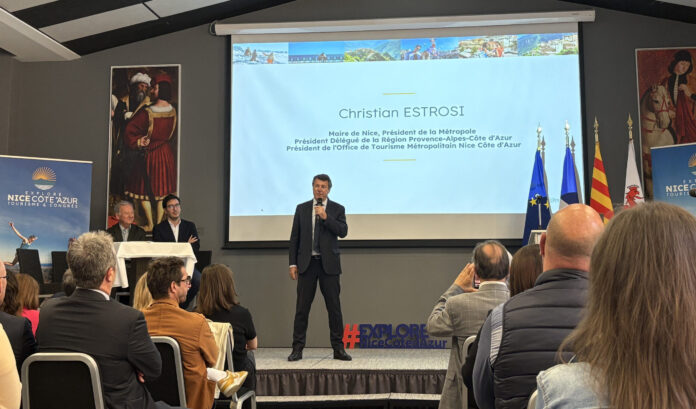Last week, the mayor of Nice, Christian Estrosi, gathered the press to discuss the record year 2024 in terms of tourist attendance. This success comes with challenges, particularly regarding housing for employees and accessibility, which the city intends to tackle to maintain a tourism that benefits everyone.
With 2.4 billion euros in revenue generated in 2024, the tourism in Nice experienced its most economically favorable year. This historic success is praised by Mayor Christian Estrosi. The local tourism model is more qualitative, more sustainable, and better integrated into the economic and social fabric of the metropolis.
“We have moved from a passive tourism to a chosen tourism”, stated the mayor of Nice. This transformation is based on clear strategies. The enhancement of natural and cultural heritage, the Mediterranean lifestyle, and a year-round event offering. The carnival, meanwhile, accounts for 65% of winter attendance.
But this success does not come without challenges. “To support employment and social cohesion, we need long-term, affordable housing for tourism workers”, emphasized Christian Estrosi. In a tight real estate market, the question of housing becomes a central issue to ensure tourism benefits all.
A Conference Destination with a Future Focus
One of the symbols of this dynamic is the new conference center. Recently inaugurated, it promises to attract major international events. “I arrive at the airport and have a conference by the sea, connected by tram and electric shuttle. Between Marseille and Genoa, there is no showcase as beautiful”, the mayor stated.
The metropolis will host in June the UNOC, one of the world’s largest summits. It will bring together over 800 representatives, including heads of state, elected officials, NGO representatives, and innovative businesses. A large-scale event that requires the mobilization of over 5,000 agents, firefighters, police officers, and logistical personnel, with housing needs anticipated from now.
Mobility, Accessibility, and Attractiveness
“When you start at zero in 2008 with a single tram line, it’s not difficult to improve,” recalls Christian Estrosi. The city now has a vast network, including trams, bikes, buses, trains, and by 2029, high-speed lines and a direct rail link to Milan will be added. This mobility evolution supports the idea of gentle tourism, respectful of the environment and quality of life.
Christian Estrosi insists: “Visitors choose Nice not to be crowded, but to experience a peaceful urban life, where culture and nature intertwine.”
During a public exchange, several suggestions were made. Notably, better evening access to the coastline during the off-season, increased accessibility of port areas, and concerns about delivery hours in the city center. All key points the municipality has considered to nurture a sustainable tourism strategy.
Year-Round Tourism, for All Audiences
With over 10 million annual visitors, Nice is now the second most popular tourist destination in France after Paris. This position is based on its ability to cater to a diverse clientele all year round. Including seaside, cultural, business tourism, and local tourism.
The figures confirm it. Business stays increased by 30% in 2024, and the average spending per visitor reaches 700 euros. This demonstrates significant purchasing power and demanding requests. The city also meets the needs of its residents, with 78% of them regularly participating in tourist activities within their own territory.


